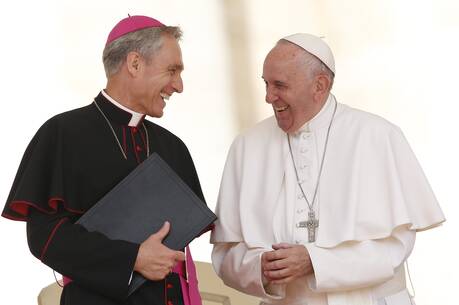I am in the midst of teaching a seminar that considers, among other things, the (perceived and often undeniable) violence involved in Christian interpretation of the Hebrew Bible. And I recently attended the feast of Purim at a conservative synagogue—quite a different experience from hearing an Esther reading at Christian liturgy on Thursday of the first week of Lent! Consequently, I would like to present a summary reminder of how ‘Judaism’ interprets today’s first reading.
When Jews interpret the Bible, they consider and consult not only the written biblical text but the genres of commentary around it: Mishnah, Talmud, legal and homiletic material, rabbinic commentary. There are four levels to consider: p’shat, the simple or plain reading; remez, the hint to other texts; drash, explication of how the passage fills in gaps; sod, the mystical meaning. In the passage Exod 3:1: at the p’shat level, we learn the particulars of Moses’ situation, working as a shepherd for his father-in-law, alone with his flock, near Sinai/Horeb. At the remez level, we ponder the relation between shepherding animals and caring for people, an equation used also for kings as well as for Moses here and also follow pathways generated by the words ‘Sinai’ and ‘Horeb.’ At the drash level, we are instructed to see God testing Moses (as also David later), to see how well he does with his flock. Will Moses be a good candidate for the job at hand? Finally, with sod we are prompted to the mystical elements of the text, the possibilities of the fire-that-does-not consume, the link to the fire experience later available at Sinai (Exodus 19), the relationship in both passages between fire and revelation.
Certain allegorical Christian procedures move as well from the literal or historical to the tropological or moral, to the anagogical or heavenly. Typology is similar, though with slightly different moves and assumptions. Common to all is the conviction that meaning is planted deep and must be sought carefully, and presumably by those living lives of holiness and discipline. We may note that other more modern kinds of critical methods (historical, literary, or reader-centered) supplement though without replacing these classic methods, though the newer methods need the ancient ones as well. Better still: We need them all to approach Scripture responsibly and fruitfully.
Barbara Green, O.P.








+
The 3rd Sunday of Lent is also the celebration of the FIRST SCRUTINY for catechumens and candidates journeying to celebrate Easter sacraments of initiation in the church. As such, I thought the images contained in the three scripture readings of Burning Bush, Rock that followed them in the desert, and the Fig Tree, provided an interesting insight about God's call to us and our response to enter into relationship with Him.
+
The God who calls, covenants, and fulfills is one who is no stranger to His people Israel, nor the many other peoples that have come across these biblical pathways and had relations with Abraham, Isaac, Jacob, etc. God is no stranger to them even before God speaks to Moses. Though St. Paul's description of the Rock of Christ may sound revisionist to Jewish ears, the idea that God's steadfastness remained faithful to the Israelites even as they faltered, would not be. Finally, while God figures both as the householder of the Fig Tree and the Gardener, the Fig Tree itself could be said to be the kind of wild embracing relationship between God and His creation. And in the steadfastness of His Law (for Jews) or Christ and His Church (for Christians) both Jews and Christians are bound to God's bidding and given our time in the desert with Him and our time to bear His fruit in us.
+
(Note: The three Readings for the 3rd Sunday of Lent Cycle C are available here: http://usccb.org/nab/030710c.shtml)